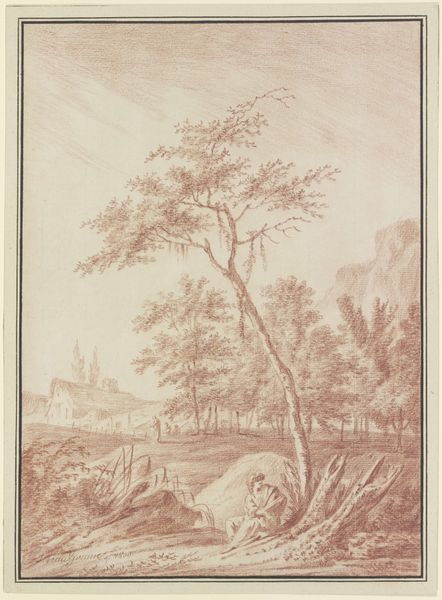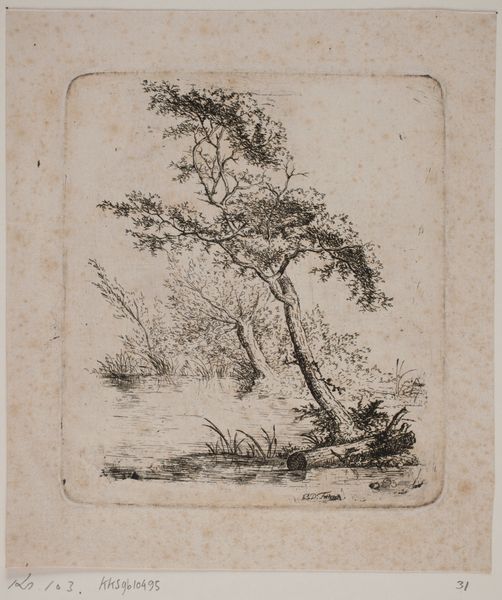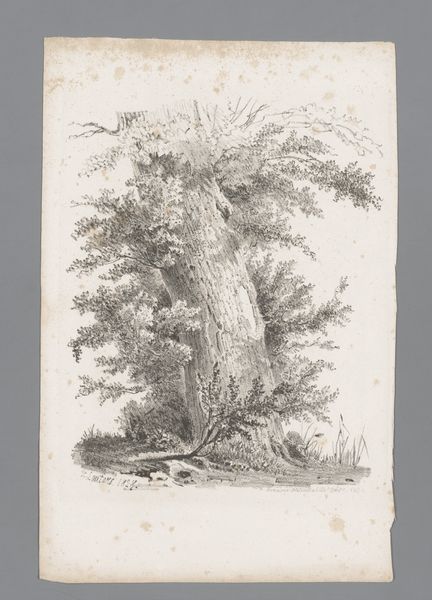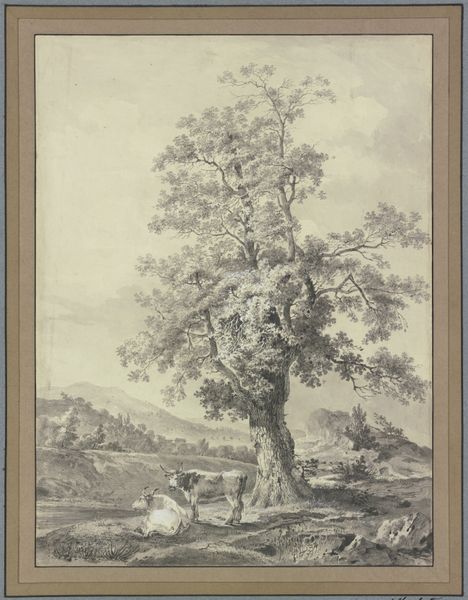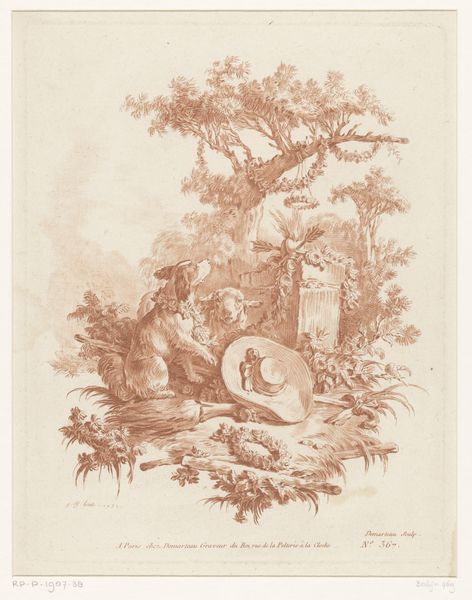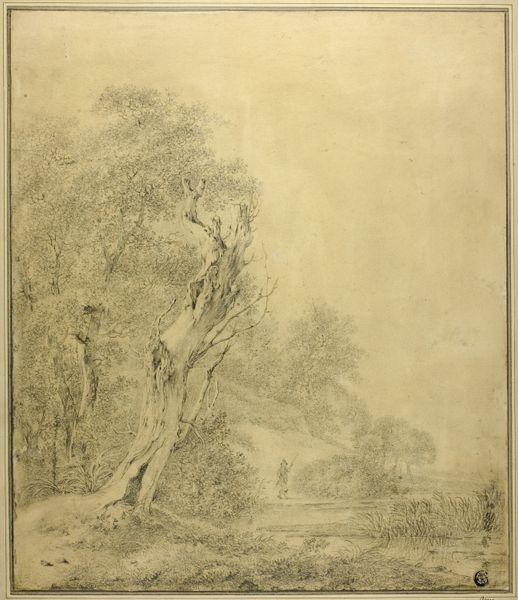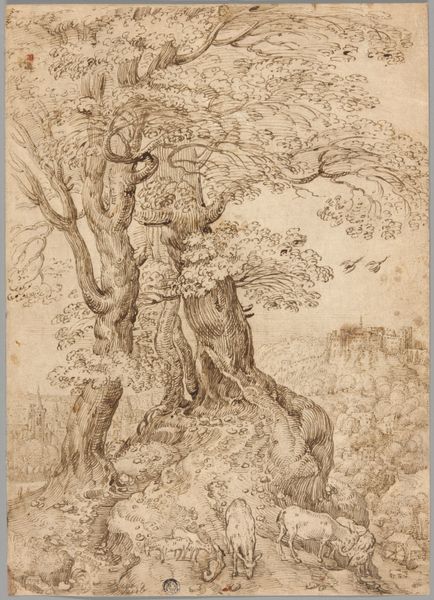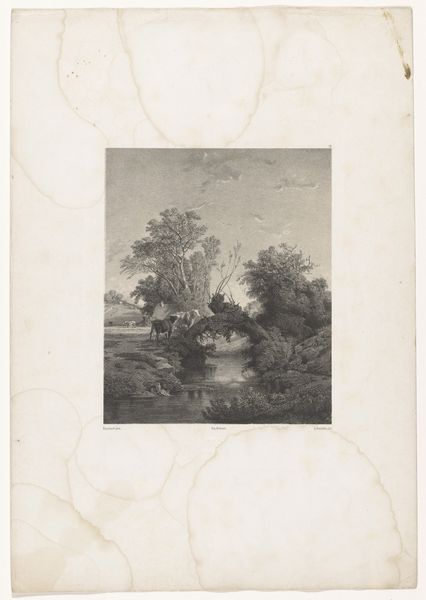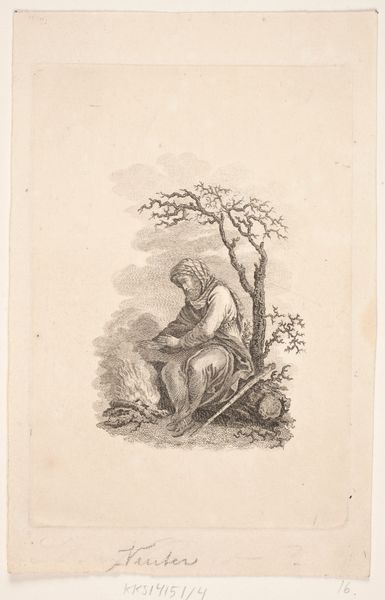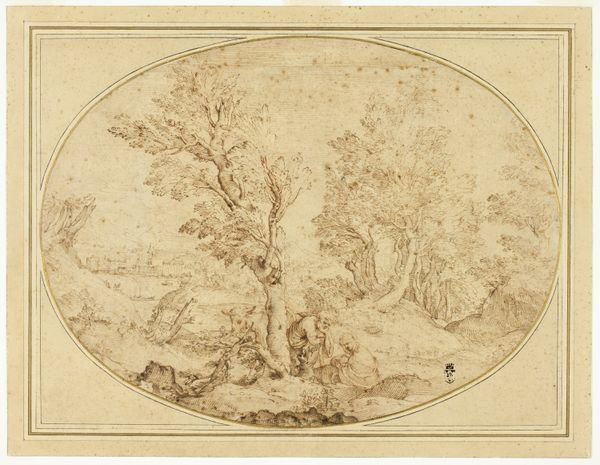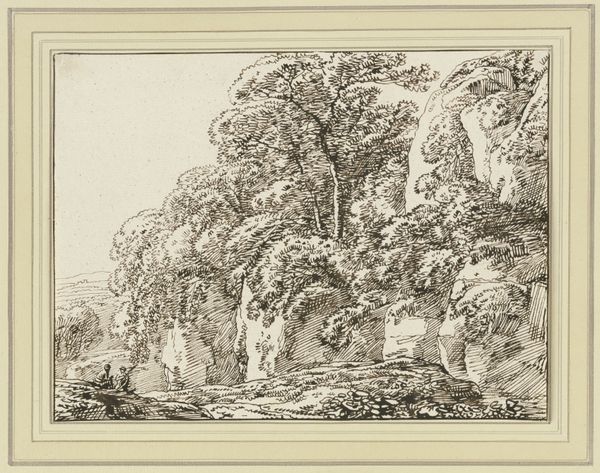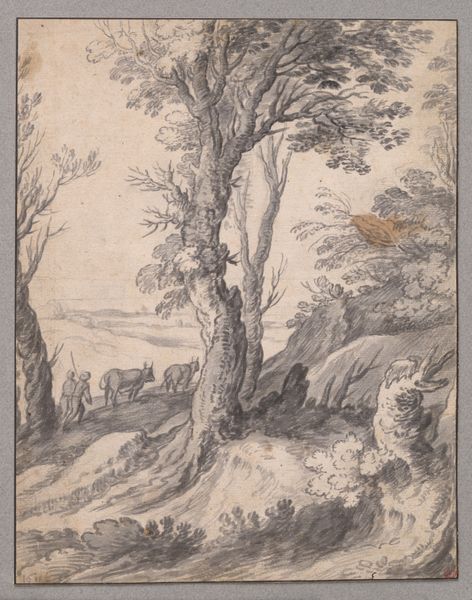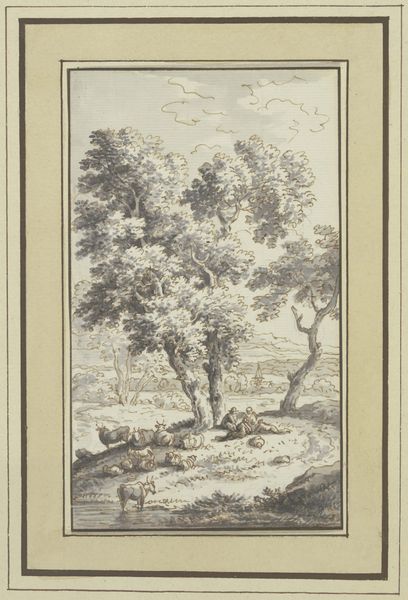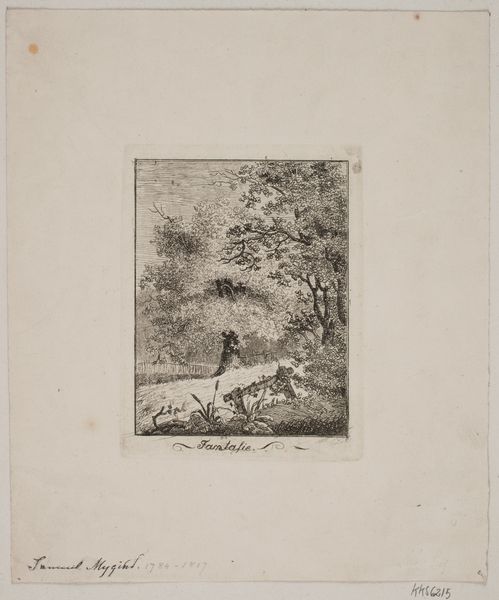
Dimensions: 363 × 287 mm (primary support); 445 × 370 mm (secondary support)
Copyright: Public Domain
Editor: Here we have Hubert Robert’s "The Nest Robber," an etching from the 1780s. The sepia tones give it a rather aged feel, like a rediscovered document. What do you see when you look at this? Curator: I'm drawn to how the printmaking process itself reflects the Romantic era's concerns with accessibility and dissemination. Etchings allowed for relatively easy reproduction, potentially reaching a wider audience than unique paintings. Consider the labor involved: the careful scoring of the plate, the application of acid, the repeated printings. How does that production impact the work's meaning for you? Editor: It's interesting to think about this piece as part of a broader print culture. I suppose the fact that it was reproducible gives it a kind of every-man quality, or perhaps democratizes it slightly. Does that relate to the subject matter? Curator: Precisely! While the title alludes to the act of nest robbing, the image itself is a bucolic scene, devoid of overt moralizing. The composition, particularly the strong lines and tones, reminds us of the materials used and actions taken in creating it, of its means of manufacture, and it gives an authenticity to this piece. Is this criminality or merely childhood fun? Think of the societal contexts in which the labor of creating art and stealing birds' eggs intersected. How might social class play into our perception of the "robber?" Editor: That's an insightful reading, considering labor and access so centrally. The artist has definitely given food for thought. Curator: Indeed. Examining the art as an object born of its materials and modes of distribution offers new possibilities.
Comments
No comments
Be the first to comment and join the conversation on the ultimate creative platform.
